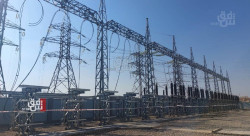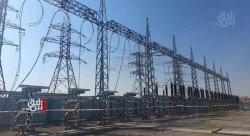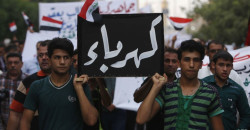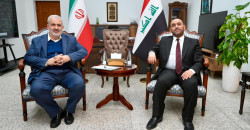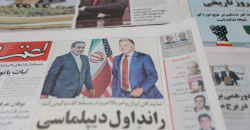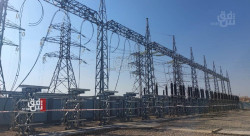Iraq's power crisis deepens: Heavy dependence on Iranian gas and limited alternatives
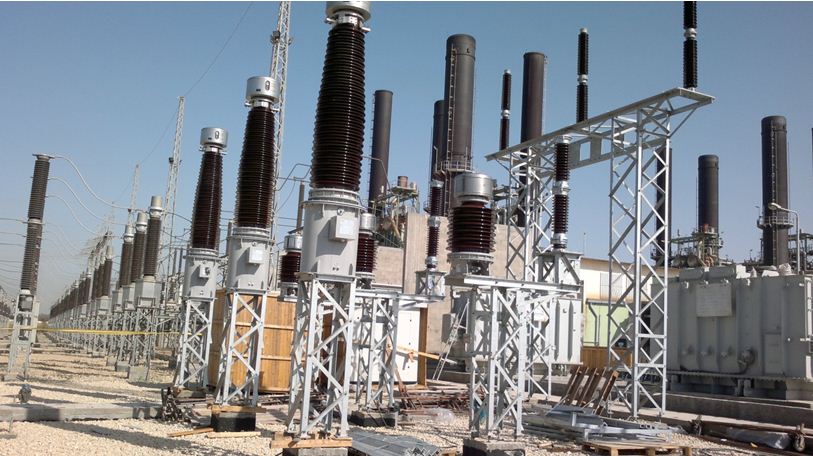
Shafaq News/ Electricity production in Iraq remains a persistent crisis that has plagued the country for decades. Power outages have become a routine reality for citizens and government institutions, leaving Iraqis with no option but to rely on private generators to meet their electricity needs.
Reliance on Iranian Gas
Iraq is heavily reliant on Iranian gas to operate approximately 40-60% of its gas-powered electricity plants, while the remaining supply comes from domestic production, which remains insufficient to meet the growing demand.
Iraq spends nearly $4 billion annually on gas and electricity imports from Iran while simultaneously flaring massive quantities of natural gas—a byproduct of its hydrocarbon sector.
The World Bank ranks Iraq as the second-largest gas-flaring country globally, following Russia and ahead of Iran and the United States. In 2020, Iraq flared 17.374 billion cubic meters of gas, placing it among the nine countries responsible for nearly half of the world's oil-related gas flaring.
Economist Durgam Mohammed Ali told Shafaq News, "Iran exports gas from its surplus production after meeting domestic consumption. However, Iraq and Iran share similar peak energy demand periods during the cold winter months, as energy needs for heating rise. Most of Iran's gas production is allocated to domestic use."
In March 2024, Iraq's Ministry of Electricity signed a five-year contract with Iran to import 50 million cubic meters of gas per day, with volumes adjusted according to the needs of Iraq's power grid to sustain production, meet peak demand, and address rising electricity consumption.
Diversification Delays
Though Baghdad has sought to diversify its electricity supply through overtures to countries such as Saudi Arabia, Turkiye, Jordan, and Kuwait, progress is not sufficiently developed.
Efforts by the Iraqi government to diversify energy sources, including contracts with Turkmenistan, have yet to yield results for unknown reasons.
Ali explained, “As a result, exports remain stalled, and Iraq essentially consumes Turkmen gas imported through Iran, which is swapped for Iranian gas used domestically in Iran.”
The spokesperson for Iraq’s Ministry of Electricity, Ahmed Mousa noted that the Iraqi government had turned to Turkmenistan to address the shortfall. However, he revealed that “a credit facility has yet to be opened, and Turkmenistan has not been notified to begin gas supplies via the agreed mechanism. The funds remain locked in the Trade Bank of Iraq for unknown reasons.”
On October 19, 2024, Iraq’s Ministry of Electricity signed a contract with Turkmenistan to import 10 million cubic meters of Turkmen gas via Iran during winter and 20 million cubic meters in summer, with supply volumes expected to rise in subsequent years to meet Iraq’s growing gas demand.
The agreement, facilitated through Switzerland’s Luxton Energy, utilizes Iran’s pipeline network and a gas swap mechanism to streamline transport.
Economist Mohammed al-Hassani told Shafaq News that even if these projects are completed, Iraq would only generate an additional 3,000 megawatts, while the country’s needs exceed 10,000 megawatts, rising to more than 15,000 megawatts in the coming years.
Al-Hassani added, “The electricity interconnection projects Iraq has initiated with neighboring countries will not eliminate the need for Iranian gas. Practically speaking, these projects are not a viable alternative.”
Solutions to a Growing Crisis
Currently, Iraq generates 16,000 megawatts of electricity, far below the estimated 24,000 megawatts required to meet demand—a figure that surges to 30,000 megawatts during the summer. With the country’s population expected to double by 2050, energy consumption is projected to rise significantly, according to the United Nations.
Energy expert Govand Sherwani highlighted three key challenges driving Iraq's electricity crisis. The country generates around 27,000 megawatts of electricity, significantly below the peak demand of 45,000 megawatts, leaving a deficit of 17,000 to 18,000 megawatts.
Sherwani recommended addressing the crisis through two primary approaches. First, he emphasized “the need to repair and modernize transmission and distribution networks, while also constructing new power plants using Iraq’s substantial natural gas reserves, estimated at 143 trillion cubic feet.”
He noted that much of this gas, particularly associated gas from oil fields, is flared rather than captured, and fully harnessing it could significantly reduce the electricity deficit.
Second, he advocated for investing in renewable energy, particularly solar power, as “large-scale solar plants with capacities of 1,000 megawatts each could rapidly cover a third of the shortfall, requiring minimal maintenance and integration time.”
“By combining domestic gas utilization with renewable energy development, Iraq could address its electricity crisis while reducing reliance on imports and environmental impact,” he assumed.
